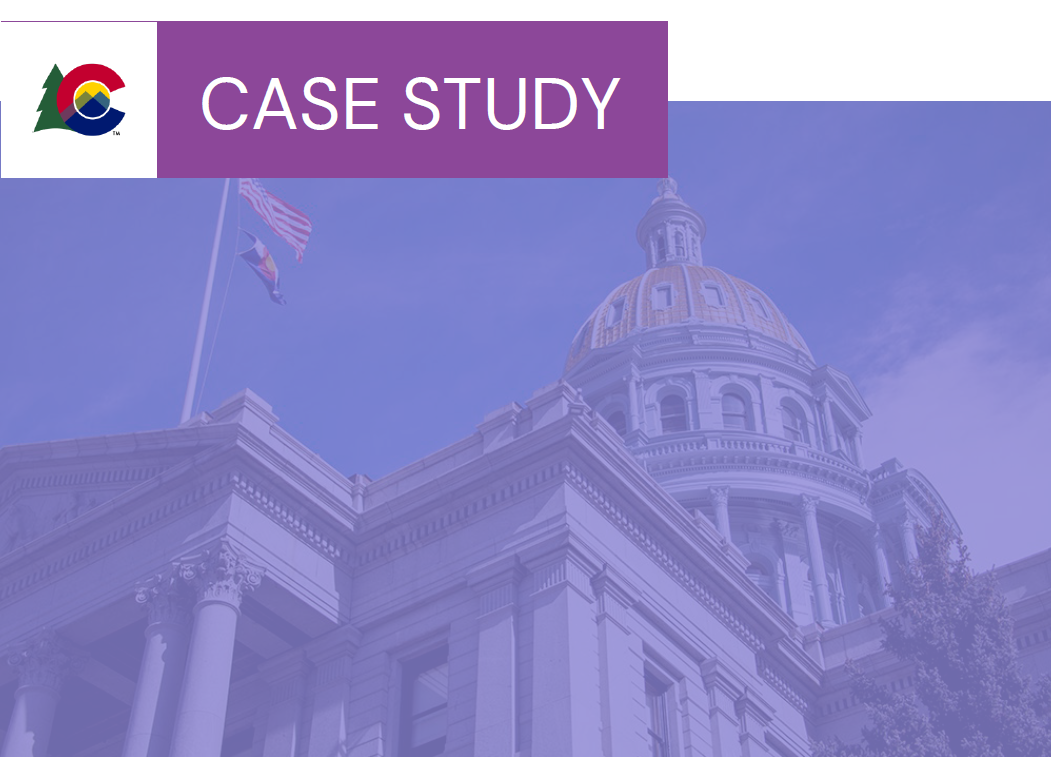This report looks at the findings from a 2019–2021 learning collaborative in which NGA hosted experts from academia, government, and the private sector to discuss a range of emerging issues in reducing impaired driving using traffic safety data.
(Download)
Executive Summary
Impaired driving is a complex social and public health challenge that requires a data-driven and multi-disciplinary response. Governors are uniquely positioned to facilitate the kinds of collaboration necessary for effective interventions through a whole-of-government approach. Since 2018, the National Governors Association (NGA) has worked to promote Governors’ policies to improve roadway safety and reduce impaired driving. Annually, alcohol-impaired driving kills over 10,000 people a year, a trend that has persisted for a decade.
The NGA’s Center for Best Practices (NGA Center) partnered with the Centers for Disease Control and Prevention’s (CDC) Division of Injury Prevention to support traffic safety efforts in states over the past five years, including convening state and territorial executive branch agencies, providing ongoing technical support, and publishing a Road Map on State Strategies to Reduce Highway and Traffic Fatalities and Injuries. Over a two-year period from 2019–2021, over one dozen states and territories participated in this effort. Thirteen states participated in a day-and-a-half policy summit. Ten states participated in a six-month learning collaborative that sought to convene agencies around the opportunities to leverage data and data collection to reduce impaired driving. The NGA Center also hosted several webinars on various impaired driving topics such as data linkage and oral fluid testing; these webinars were joined by dozens of states and territories.
Throughout 2019–2021 as part of this learning collaborative, NGA hosted experts from academia, government, and the private sector to discuss a range of emerging issues in reducing impaired driving using traffic safety data. Topics covered during these meetings included: understanding data needs, gaps, and challenges; considerations and best practices for toxicology standards and operations; and leveraging data and partnerships within a state, including partnerships with public health. Participating states explored new strategies for increased data accessibility for agencies and the public, found ways to better collaborate between agencies, and directed resources to fund critical programs to assist stakeholders. This report looks at the findings from this work.
Background
Governors, state/territory agencies, and state/territory officials play a critical role in ensuring safe transportation and use of public roadways. According to the National Highway Traffic Safety Administration (NHTSA), in 2019, 10,142 people died in alcohol-impaired driving crashes, accounting for 28% of all traffic-related deaths in the United States. NHTSA’s early estimates for 2020 have shown an increase of more than 7 percent in fatal crashes compared to the previous year, driven by behaviors such as impaired driving, speeding and failure to wear a seat belt. In 2016, drugs other than alcohol, both legal and illegal, were involved in about 16% of motor vehicle crashes, with nearly 11% of all fatally injured drivers testing positive for opioids. However, the rate of all drug-impaired driving is widely viewed as an undercount due to enforcement procedures and the cost and time associated with testing for the presence of drugs beyond alcohol.
As states continue to address the changing landscape of drug use—with trends that include the ongoing emergence of fentanyl, a rise in polysubstance use, and legalization of cannabis for adults—addressing drug-impaired driving alongside alcohol-impaired driving remains a critical component of state-level response.
Identifying the Scope of the Problem and Potential Strategies
To effectively craft strategies to address impaired driving, participating states first gathered to gain a comprehensive picture of the problem. In May 2019, NGA hosted a national Impaired Driving Policy Summit in Columbus, Ohio. The goal of the Summit was to cultivate awareness of the risks of impaired driving, share best practices among states in countering both drug- and alcohol-impaired driving, and highlight key policy and programmatic approaches. Participating states included: Colorado, Connecticut, Delaware, Massachusetts, Minnesota, North Carolina, North Dakota, Ohio, South Carolina, Utah, Vermont, Virginia, and Washington.
The Summit included a number of discussion-based plenaries, breakout sessions, and regional sessions. Meeting topics included: trends, polysubstance use, and gaps; impairment across different age groups; research gaps in impaired driving data; roadside testing (practice, challenges for policymakers, and innovations); the role of toxicology; lessons learned by states that have legalized and/or decriminalized marijuana; the role of autonomous vehicles and identifying impairment; and understanding the public health and public safety relationship for impairment as it relates to recidivism and alcohol use disorder.
Participants found that strong data collection and standardization are needed to fully understand impaired driving at the state level. Executive-level mandates for Memorandums of Understanding (MOUs) and Data Use Agreements (DUAs) facilitated data linking and sharing processes and encouraged cross-agency coordination.
Participants also found that many states are already working to develop a more robust understanding of data relevant to impaired driving. States shared that impaired driving information is housed in various agencies (e.g., Departments of Transportation, Departments of Motor Vehicles, Departments of Public Safety, Departments of Correction) and branches of government (judicial and executive).
Regardless of whether a state has legalized medicinal and/or recreational cannabis via legislation or referendum, states need to understand their current data and begin to fill in gaps. Otherwise, there is no way to understand impaired driving landscape changes before and after legalization. Lessons learned that were communicated to states who had yet to pass recreational cannabis focused around per-se and statutorily decided nanogram limits.
Further, some of the more rural states identified struggles with cultural norms regarding alcohol consumption and alcohol-impaired driving, despite much national focus going toward drug-impaired driving. States also discussed a general public misperception about the ability of prescription drugs to impair drivers and the need to tailor messaging by age group. Participants discussed that an understanding of attitudes and beliefs regarding impaired driving is critical to tailoring messages and educating the public.
Across NGA’s multi-state convenings, states gathered to discuss the various facets of impaired driving, how to determine what information is necessary to fully understand the scope of impaired driving within a state, and considerations for future policy changes, such as recreational cannabis legalization (whether by voter referendum or gubernatorial-signed policy change).
Governors’ Offices Roll Up Sleeves, Roll Out Strategies to Reduce Impaired Driving
From 2020 to 2021, NGA convened ten states in alearning collaborative to look at state strategies to strengthen and leverage data with a goal of addressing impaired driving. Over the course of six months, participants shared challenges and successes in their states, exchanged ideas with other jurisdictions, and developed and executed action plans.
NGA hosted experts from academia, government, and the private sector to discuss a range of emerging issues in reducing impaired driving using traffic safety data. Topics covered during the kick-off meetings included: understand data needs, gaps, and challenges; considerations and best practices of toxicology standards and operations; and leveraging data and partnerships within a state, including public health.
Key takeaways from projects in each state included the following:
- Colorado explored new strategies for increased data accessibility for agencies and the public.
- Connecticut informed their state’s driving under the influence and cannabis-related legislation and identified ongoing opportunities to incorporate equity considerations and to better assess the impact of future cannabis policies.
- Hawai’i initiated steps to establish and implement a state-administered forensic toxicology testing laboratory, as well as identified new strategies to improve data access, sharing, collection and linkage to address data gaps.
- Maryland developed educational programs for Maryland judiciary personnel, state prosecutors, and local and state law enforcement agencies, including training for the new State Judicial Outreach Liaison.
- Minnesota continued to work to expand its’ DWI Courts and is also exploring additional judicial programs to reduce recidivism.
- North Carolina leveraged the information gained through the learning collaborative to expand training goals by identifying regional needs based on prevalence of particular drugs involved in impaired driving crashes.
- North Dakota planned a pilot study to increase their ability to test for drugs through oral fluid screening process. During the learning collaborative, the state team supported the Oral Fluid Technical Advisory Committee’s work in advancing this initiative.
- Virginia gathered information on other states’ approaches to driving under the influence laws related to marijuana (e.g., impairment-based, per se standards) and detection practices, such as blood screens and oral swabs to test the levels of Tetrahydrocannabinol, to inform the development of the state’s marijuana legalization study.
- Vermont improved and advanced the state’s governance and data sharing initiatives on the reporting and analysis of impaired driving data, including identifying additional strategies to improve the state’s data collection practices and opportunities for data linkage between existing data sets to allow for more easily accessible information.
- Wyoming developed a curriculum to assist law enforcement and business owners in identifying when an individual may be too impaired to operate a vehicle or piece of equipment.
In partnership with the CDC’s Division of Injury Prevention, the NGA Center will continue to support impaired driving initiatives in states and work with Governors to improve traffic safety.
Authors
Elise Simonsen, Senior Policy Analyst, NGA Center for Best Practices
Thomas Curtin, Program Director, Infrastructure, NGA Center for Best Practices
Acknowledgements
The National Governors Association Center for best practices would like to thank the state participants, speakers, and national experts that contributed to the success of both the Impaired Driving Policy Summit and the Learning Collaborative on State Strategies to Strengthen and Leverage Data to Address Impaired Driving. This work is a joint effort across two policy teams at NGA, the Public Safety and Legal Counsel Program & the Infrastructure program. In addition to the authors, thanks to the broader transportation safety team, past and present, who were involved across these efforts: Jeff Locke, Garrett Eucalitto, David Engleman, Nicole Banister, and Jake Varn. We are grateful for the continued support and partnership of the Centers for Disease Control and Prevention Transportation Safety Team, especially Erin K. Sauber-Schatz, PhD.













